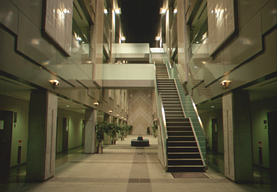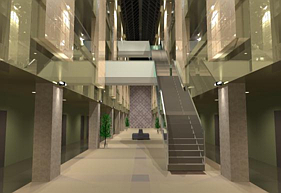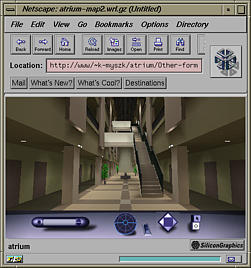

Scanned slide of the real-world atrium and CG image


Scanned slide of the real-world atrium and CG image
Visualization of an atrium at the
University of Aizu is an ongoing project.
When preparing this web page we have mainly in mind early dissemination
of the atrium data for people involved in global illumination research,
but of course the other applications are possible. At the current stage,
the basic model components required for rendering are available.
We are still working to get more sophisticated data which
we will include here when available.
So far, the following steps of this project were performed:
In the future, we hope to measure the reflectance properties of the most
important materials. At present, purely diffuse and/or specular
reflectance was assumed and the reflectance coefficients were assigned
based on our estimation and observation of the real-world atrium
appearance. The same "method" was used to choose colors of non-textured
surfaces. Another drawback of our model is inexact modeling of
luminaires positions. The real light sources are mounted in the
ceiling of the side corridors and near the roof of the atrium.
Since in the model the corresponding holes are not modeled,
the position of light sources is slightly translated downward to avoid
their obstruction by the surface of ceiling. This is also
why the light sources are not directly visible.
Ambient light is used to mimic the appearance of the decorative
light sources attached to the side walls of the atrium.

2a) Gallery
3) Movies (Quick Time video format)
